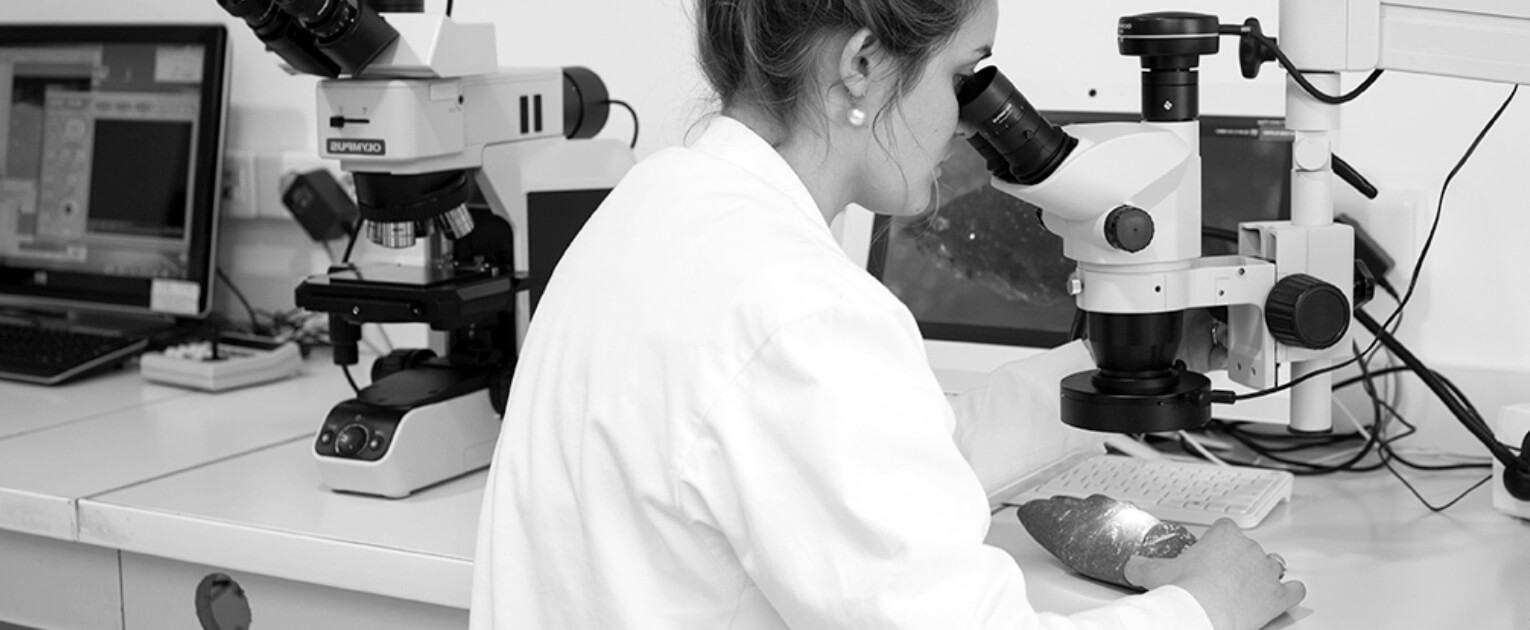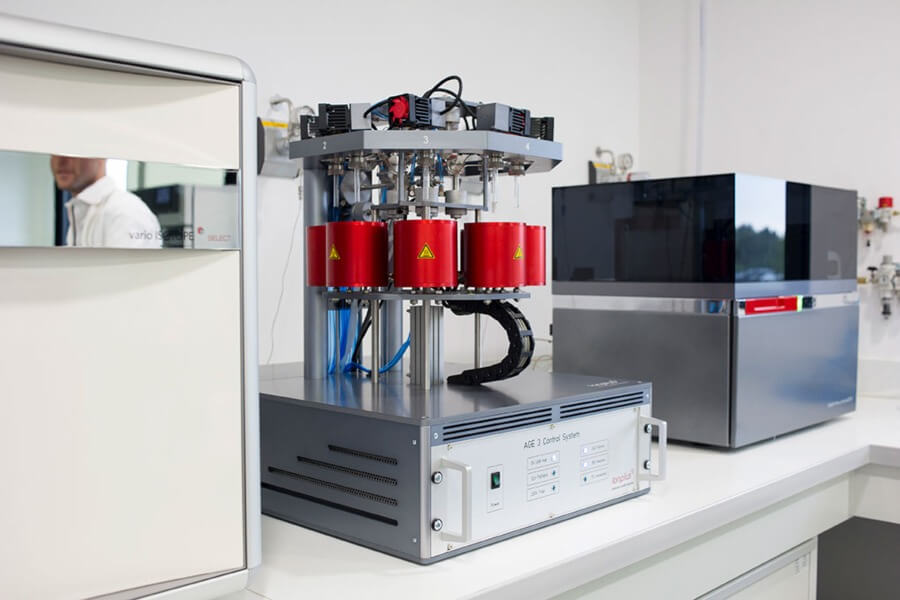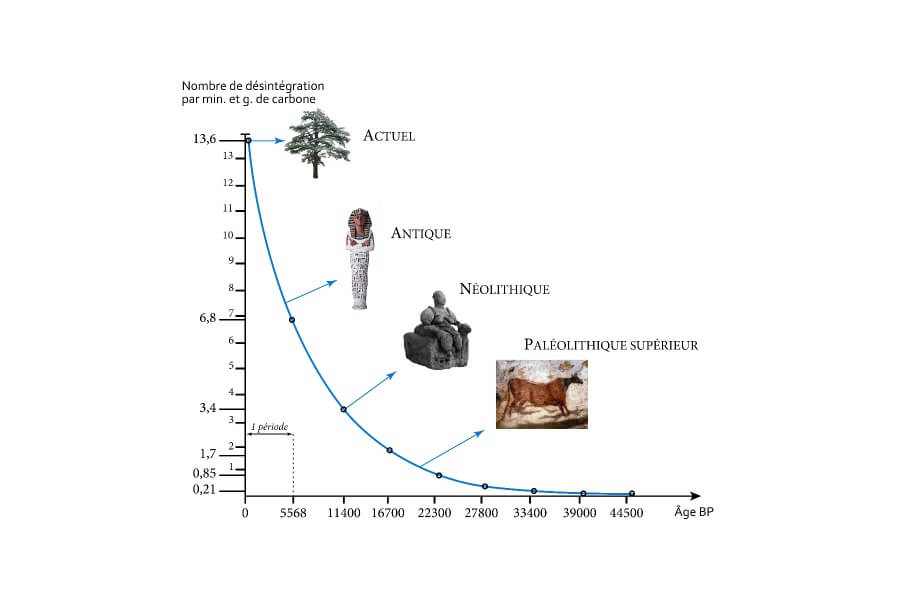
CARBON 14 AND RADIOCARBON
Carbon-14 dating or radiocarbon analysis is based on the measurement of the radiological activity of carbon-14 contained in all organic materials.
The principles of carbon-14 dating
Since the discovery of this method in the 1940s by Willard Frank Libby (Nobel Prize in Chemistry in 1960), researchers and scientists have used it primarily for dating. CIRAM laboratories are the world leaders in art dating and specialist in carbon 14 or radiocarbon analysis.
Dating works of art, archaeological dating or analysis of bio-based products, discover the different functions of carbon 14 analysis.
Carbon-14, a multifunctional method
Carbon-14 is a radioactive isotope of carbon, present in all organisms, but in very small quantities. Used since the 1950s, this discovery has made it possible to date archaeological artifacts, but also works of art. Recently, this method is also used to measure the rate of products from biomass (also called biobased) in industrial products, such as biofuels, cosmetics, biopolymers, food, detergents, paints.
CIRAM laboratories perform carbon-14 (or radiocarbon) analysis for:
- The art market, for authentication and dating of objects;
- Archeology, for dating charcoal, bones, peat…;
- The Bio-based Products industry, to quantify the proportion of biomass to petroleum-based.

Living organisms assimilate carbon without isotopic distinction. The proportion of carbon-14 to total carbon is the same as that existing in the atmosphere at the time. When an organism dies, the amount of radiocarbon will decrease over time according to the exponential loin (its concentration is divided by two every 5,568 years).
Through our carbon-14 (or radiocarbon) analyses, we date the death of the organism: felling of the tree, death of the individual, harvesting of the cotton… Whether for archaeology or the art market, carbon-14 dating is relevant, reliable, and accurate for all organic materials. The principles of radiocarbon dating also work for industrial biosourced products. From the study of this isotope, we are able to determine the percentage of natural ingredients per synthetic product, as well for cosmetics, food processing, biofuels, biopolymers, etc.

The dating of art objects by carbon 14
It is possible to date works of art composed of ivory, wood, bone, paper, or any other organic material.
In the context of an art object, carbon-14 dating allows:
- Authenticating an object or detecting a copy;
- Making a chronological setting and specifying an era.
Whether it is a painting, sculpture, manuscript or any other art form, carbon-14 dating can be performed if the object contains organic material.
Carbon 14 dating for archaeology
Carbon 14 dating will allow the chronological setting of your stratigraphies and burials. Usable for dating up to 60,000 years, carbon 14 is THE most widely used physical measurement for archaeology. We will be able to date all organic or carbon-containing materials: from the most well-known like charcoal or bones, to peat, organic sediments, teeth, seeds, shells…
It is from the measurement of radiological activity that our teams of scientists define the age of the artifacts.
After sampling in the field, CIRAM proceeds with the carbon 14 dating within 10 working days to meet the constraints of preventive archaeology.
Analysis of your biobased products
With AMS carbon-14 dating, CIRAM laboratories also analyse your industrial products. Our scientists quantify the percentage of carbon from biomass compared to carbon from petrochemicals according to ASTM D6866 and EN 16640 standards.
With an accuracy of less than 0.5%, radiocarbon analysis can be used to study all industrial products from R&D, to formulation, to production and finished products.
Radiocarbon (or carbon-14) analysis of biobased products is applicable in many areas such as
- Fuels to measure the proportion of biofuels;
- food processing to identify adulteration
- cosmetics to measure the naturalness rate
- construction materials, including paints and floor
- coverings, to obtain ecolabels;
- biopolymers and bioplastics to obtain labels
- paper, cardboard and packaging;
- solid recovered fuels (SRF);
- smoke and fine particles.
CIRAM, European leader in carbon-14 dating
CIRAM laboratories provide reliable and accurate results using methods such as carbon-14 dating in compliance with ASTM D6866 and EN 16640 standards. Our teams of scientists ensure a rigorous, relevant and fast service to answer your art authentication, archaeological dating and biobased products analysis issues.
For more information, contact us.
